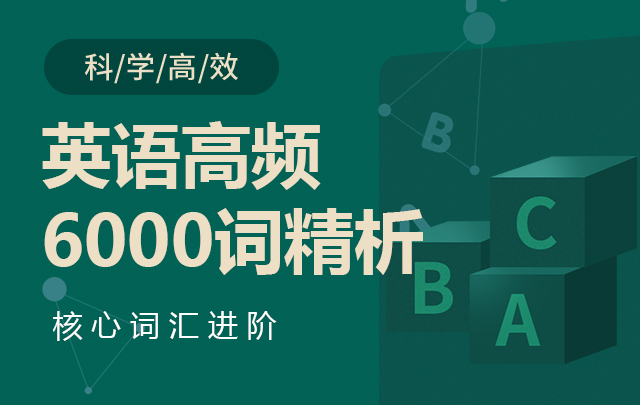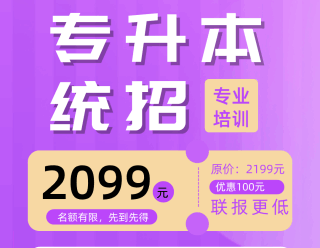Alzheimer’s Drugs May Reach Brain Faster with Ultrasound Tool
利用超声波工具,阿尔茨海默病药物可能更快地到达大脑。
【听力音频】
----------------------------------------------------------------------
By Dan Friedell
15 January 2024
Researchers recently said a new tool that uses what is called focused ultrasound can help deliver important medicine to the brains of Alzheimer's patients.
Alzheimer's is a disease that slowly reduces the brain function of patients, causing confusion and other problems. The new delivery method helps drugs remove the brain-clogging plaque the disease is known for.
The small sound waves created by the ultrasound tool create openings in what is called the blood-brain barrier. It is the protective lining in blood vessels that prevents bacteria and other damaging substances from getting into the brain.
However, the barrier also prevents Alzheimer's medication from getting into the brain.
The new technique permits the medicine to get into the brain more easily and remove the plaque faster. So far, the tool has been used on only three patients. Each patient saw a faster removal of plaque than with a traditional treatment.
Dr. Ali Rezai of West Virginia University's Rockefeller Neuroscience Institute led the study. "Our goal is to give patients a head start," he said.
Some of the new Alzheimer's treatments take a long time to work, he explained. But with the ultrasound tool, the drugs move into the brain faster.
The medicine delivery requires three steps. First, doctors inject tiny bubbles into the bloodstream. Then patients put on a special head covering that permits doctors to send sound waves to an exact area of the brain. The waves vibrate the bubbles which loosen the blood-brain barrier just enough for the drug to get in.
Before Rezai's study, other researchers discovered the ultrasound technique was able to make small openings in the barrier. The openings closed up after 48 hours. Rezai's experiment showed that the technique could be used to deliver medicine.
Many of the recently approved Alzheimer's treatments take a long time to work. Patients must come for injections every few weeks for 18 months. The new treatment offers hope that patients can get results faster.
"Why not try to clear the plaques within a few months," Rezai asked when discussing the reason behind his study.
His team gave three patients a dose of the drug Aduhelm each month for six months. Right after each injection, his team aimed the focused ultrasound at part of the brain known to have the plaque build-up. As a result, more of the day's dose of the drug got through the blood-brain barrier.
The team scanned the patients' brains before and after the treatment. After six months, scans showed a 32 percent reduction in plaque in the areas that were targeted, compared to areas that were not targeted.
Dr. Eliezer Masliah of the National Institute on Aging was not involved in the research. Masliah said the trial brings some hope for Alzheimer's patients. However, he advised that larger trials are needed.
"It's very exciting ... data," he said. "It opens the door for more extensive, larger studies."
Masliah warned that one concern that must be investigated is whether the faster delivery of the drug will create side effects such as swelling and brain bleeding.
Rezai said he is about to start a new study using another Alzheimer's drug called Leqembi. He added that larger studies would be needed to see if combining focused ultrasound with Alzheimer's drugs makes a real difference for patients.
Other researchers may start studying whether the technique works for the treatment of other diseases that affect the brain, such as cancer.
I'm Dan Friedell.
Dan Friedell adapted this story for Learning English based on a report by the Associated Press.
----------------------------------------------------------------------
作者:Dan Friedell
2024年1月15日
研究人员最近表示,一种新的工具可以利用所谓的聚焦超声波,帮助将重要的药物输送到阿尔茨海默病患者的大脑。
阿尔茨海默病是一种慢慢减少患者大脑功能的疾病,导致混乱和其他问题。新的给药方法有助于药物清除疾病所知的堵塞大脑的斑块。
超声波工具产生的小声波在所谓的血脑屏障中创建开口。这是血管中的保护层,防止细菌和其他有害物质进入大脑。
然而,这个屏障也阻止了阿尔茨海默病药物进入大脑。
新的技术使药物更容易进入大脑并更快地清除斑块。到目前为止,这个工具只在三个患者身上使用过。每个患者的斑块清除速度都比传统治疗快。
西弗吉尼亚大学洛克菲勒神经科学研究所的阿里·雷扎伊博士领导了这项研究。他说:“我们的目标是给患者一个提前开始的机会。”
他解释说,一些新的阿尔茨海默病治疗需要很长时间才能起作用。但是,使用超声波工具,药物可以更快地进入大脑。
药物输送需要三个步骤。首先,医生将微小的气泡注入血流。然后,患者戴上一种特殊的头部覆盖物,允许医生将声波发送到大脑的精确区域。波动使气泡振动,这就足够松动血脑屏障,让药物进入。
在雷扎伊的研究之前,其他研究人员发现超声波技术能够在屏障中制造小的开口。这些开口在48小时后关闭。雷扎伊的实验表明,这种技术可以用于输送药物。
许多最近批准的阿尔茨海默病治疗需要很长时间才能起作用。患者必须每隔几周来接受注射,持续18个月。新的治疗方法带来了希望,患者可以更快地看到效果。
雷扎伊在讨论他的研究背后的原因时问道:“为什么不试着在几个月内清除斑块呢?”
他的团队每月给三个患者注射一次Aduhelm药物,持续六个月。每次注射后,他的团队都会将聚焦超声波瞄准已知有斑块堆积的大脑部分。结果,更多的当天药物剂量通过了血脑屏障。
团队在治疗前后扫描了患者的大脑。六个月后,扫描显示,与未被瞄准的区域相比,被瞄准的区域的斑块减少了32%。
美国国家老年病研究所的埃利泽尔·马斯利亚博士并未参与这项研究。马斯利亚表示,这项试验为阿尔茨海默病患者带来了一些希望。然而,他建议需要进行更大规模的试验。
他说:“这是非常令人兴奋的...数据。它为更广泛、更大规模的研究开启了大门。”
马斯利亚警告说,必须调查的一个问题是药物更快的输送是否会产生副作用,如肿胀和脑出血。
雷扎伊说,他即将开始使用另一种名为Leqembi的阿尔茨海默病药物进行新的研究。他补充说,需要进行更大规模的研究,以查看将聚焦超声波与阿尔茨海默病药物结合是否真正对患者有所帮助。
其他研究人员可能会开始研究这种技术是否适用于治疗其他影响大脑的疾病,如癌症。
我是Dan Friedell。
Dan Friedell根据美联社的报道为英语学习改编了这个故事。
----------------------------------------------------------------------
故事中的词汇
focus –v.集中或定位到特定位置,对某事物给予额外的关注
ultrasound –n.一种利用声波创建身体影像的医疗程序
clogging –adj. 描述某个区域,如隧道或动脉,由于阻塞,水或液体(如血液)无法自由流动的情况
plaque –n.一种可能在牙齿或脑组织上积聚的粘性物质
bubble –n. 液体内部充满空气或气体的小囊泡
vibrate –v. 以快速的动作来回移动
dose –n. 医生为治疗医疗问题给予的药物或药品的量
scan –v.仔细查看某物,通常使用医疗成像设备
本文关键字:
 免费试听
免费试听

时长 : 5:22 主讲 : 金格妃

时长 : 27:51 主讲 : 金格妃

时长 : 17:20 主讲 : 郭宁

时长 : 3:54 主讲 : 金格妃

时长 : 26:58 主讲 : 乔迪

时长 : 26:58 主讲 : 乔迪

时长 : 26:58 主讲 : 乔迪

时长 : 3:54 主讲 : 金格妃

时长 : 1:46 主讲 : 金格妃
 推荐阅读
推荐阅读
Webb Telescope Captures Images of 19 Spiral Galaxies 韦伯望远镜捕捉到19个螺旋星系的图像
来源 : 网络 2024-02-19 13:01:00 关键字 :
Student Academy Awards Provide ‘Momentum’ for Young Filmmakers 学生学院奖为年轻电影制作人提供“动力”
来源 : 网络 2024-02-19 11:48:00 关键字 :
Do You Have a Doppelg?nger ? 你有一个“分身”吗?
来源 : 网络 2024-02-18 11:37:00 关键字 :
Is Elon Musk Worth $55 8 Billion to Tesla?埃隆·马斯克对特斯拉来说价值558亿美元吗?
来源 : 网络 2024-02-18 11:32:00 关键字 :
Remembering Chita Rivera 记忆中的奇塔·里维拉
来源 : 网络 2024-02-16 11:26:00 关键字 :
Women to Take Center Stage at the Grammys 女性将在格莱美奖上占据主导地位
来源 : 网络 2024-02-16 11:20:00 关键字 :
Reduction and Assimilation 音节减少和同化
来源 : 网络 2024-02-15 11:13:00 关键字 :
Why Is Canada Limiting Foreign Students? 为什么加拿大要限制外国学生?
来源 : 网络 2024-02-15 11:07:00 关键字 :
It Has Never Been More Costly to See the Super Bowl 观看超级碗的费用从未如此高昂
来源 : 网络 2024-02-14 11:02:00 关键字 :
Australian Filmmaker Shows Japanese Single Mothers, Children Face Poverty 澳大利亚电影制片人展示日本单亲妈妈和孩子面临贫困的情况
来源 : 网络 2024-02-14 10:55:00 关键字 :


 精品课
精品课
价格 : 0元
限报人数:1000人
价格 : 0元
限报人数:1000人
价格 : 0元
限报人数:1000人
价格 : 0元
限报人数:1000人
 阅读排行榜
阅读排行榜
 相关内容
相关内容